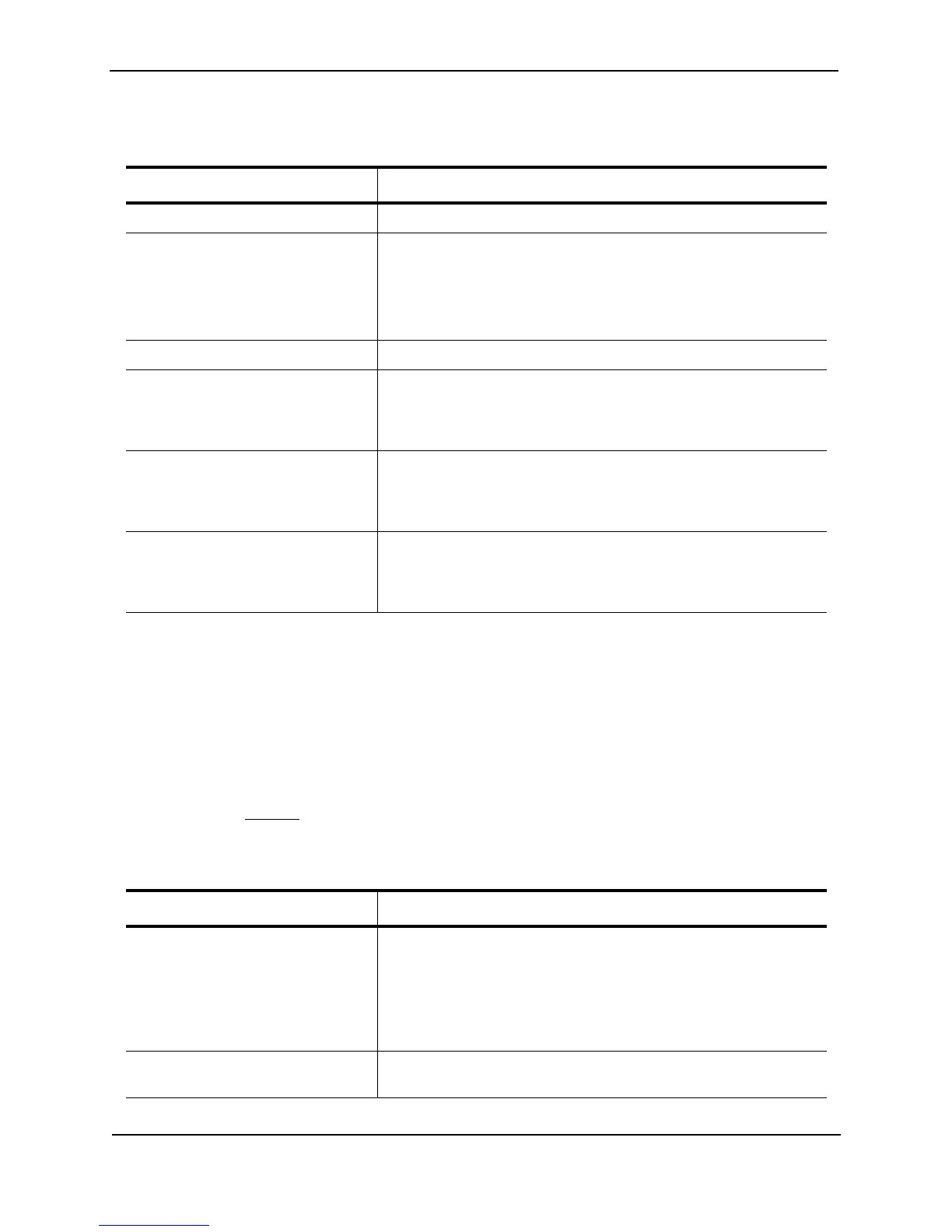Foundry Switch and Router Installation and Configuration Guide
15 - 88 December 2000
USING THE WEB MANAGEMENT INTERFACE
To display IP interface information:
1. Log on to the device using a valid user name and password for read-only or read-write access. The System
configuration panel is displayed.
2. Click on the plus sign next to Configure in the tree view.
3. Click on the plus sign next to IP in the tree view to expand the list of IP option links.
4. Click on the Interface
link to display the IP interface table.
This display shows the following information.
Table 15.9: CLI Display of Interface IP Configuration Information
This Field... Displays...
Interface The type and the slot and port number of the interface.
IP-Address The IP address of the interface.
Note: If an “s” is listed following the address, this is a secondary
address. When the address was configured, the interface already had
an IP address in the same sub-net, so the software required the
“secondary” option before the software could add the interface.
OK? Whether the IP address has been configured on the interface.
Method Whether the IP address has been saved in NVRAM. If you have set
the IP address for the interface in the CLI or Web Management
interface, but have not saved the configuration, the entry for the
interface in the Method field is “manual”.
Status The link status of the interface. If you have disabled the interface with
the disable command, the entry in the Status field will be
“administratively down”. Otherwise, the entry in the Status field will be
either “up” or “down”.
Protocol Whether the interface can provide two-way communication. If the IP
address is configured, and the link status of the interface is up, the
entry in the protocol field will be “up”. Otherwise the entry in the
protocol field will be “down”.
Table 15.10: Web Display of IP Interface Information
This Field... Displays...
Port # The physical port number or virtual interface (VE) number. VEs are
shown as “v<num>”, where <num> is the number you assigned to the
VE when you configured it. For example, VE 1 is shown as “v1”.
If a range of ports is listed in this field, the interface is a trunk group. If
two ranges of ports are listed, the interface is a trunk group that spans
multiple chassis modules.
Encapsulation The frame type used to encapsulate packets on this interface. The
frame type is always Ethernet II.
